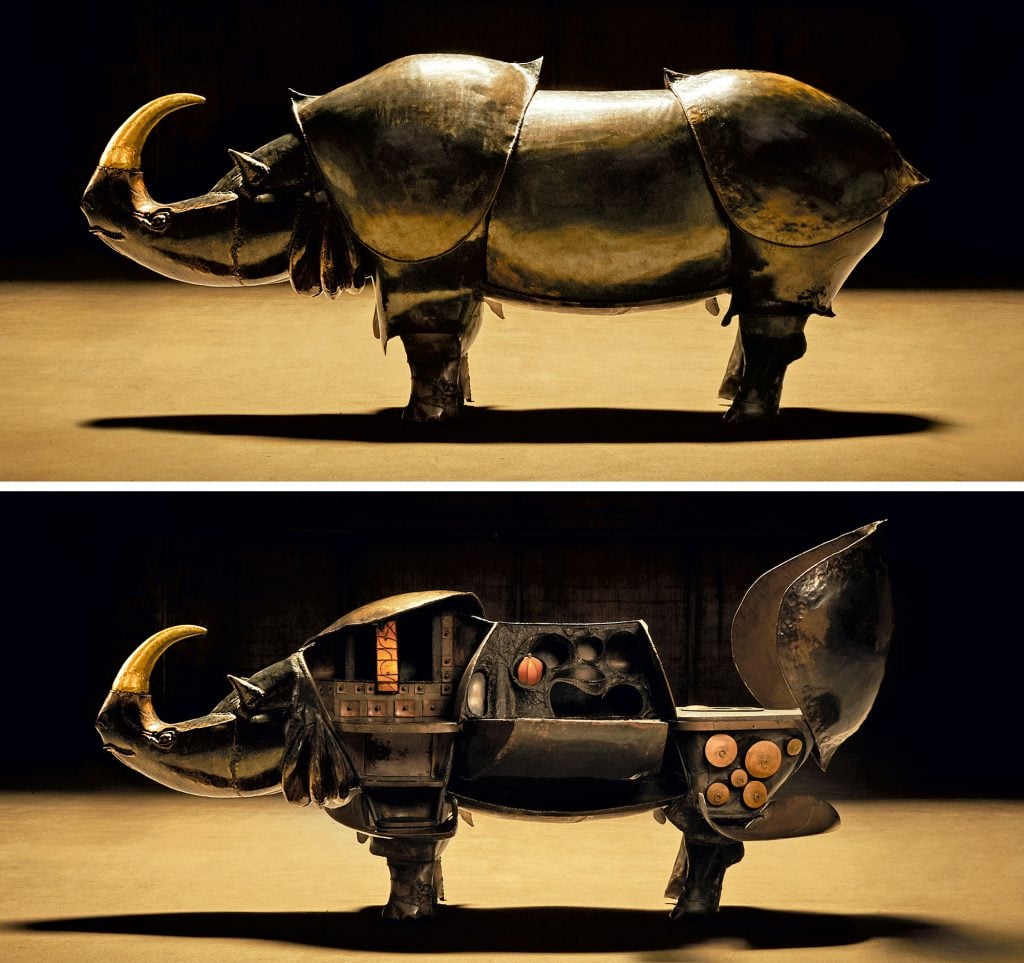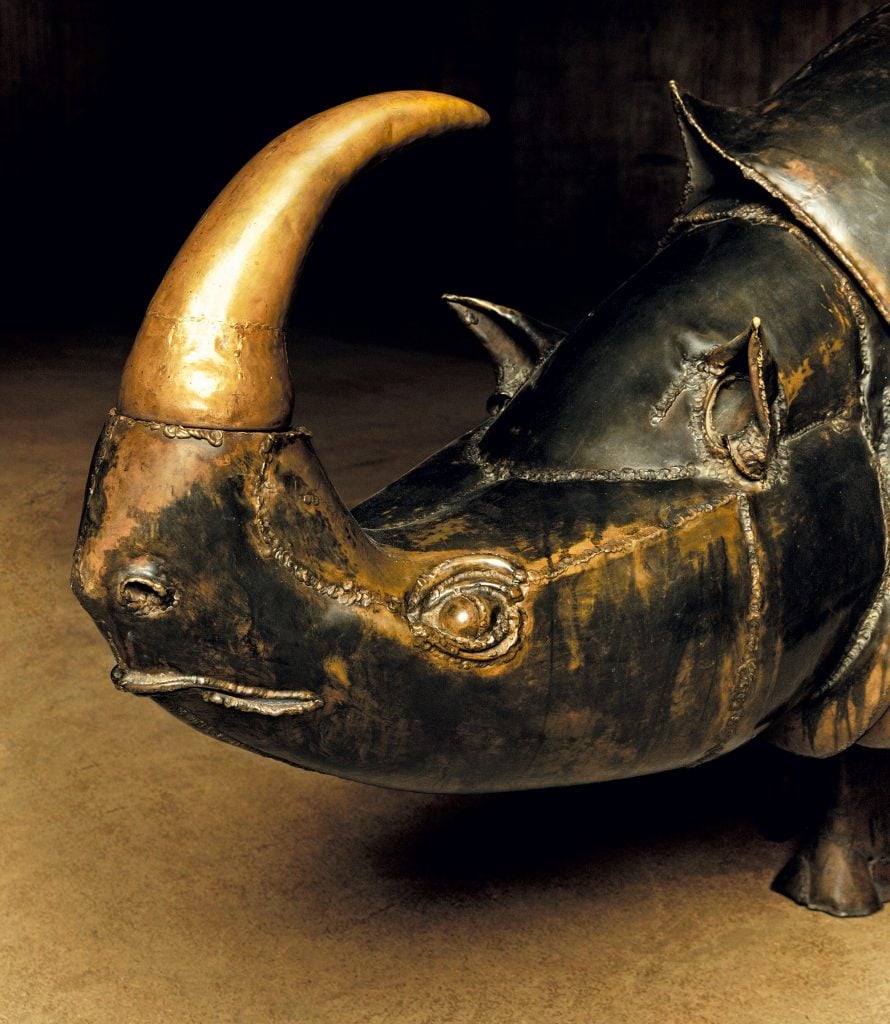Auctions
A Rhinoceros With a Secret Bar, the First Large Animal Sculpture by François-Xavier Lalanne, Could Catch $6.5 Million at Auction
The horned beast of 1964 set the tone for the artist's zoological whimsy for the next 44 years.

The horned beast of 1964 set the tone for the artist's zoological whimsy for the next 44 years.

Lee Carter

Christie’s Paris will offer the first major sculpture created by François-Xavier Lalanne—and widely considered to be his most important—in a single-lot auction on October 20, alongside Paris+ par Art Basel. The horned beast is estimated to fetch between €4 million and €6 million ($4.4–$6.5 million).
The armored body of Rhinocrétaire I (1964)—which can be opened to reveal a hidden desk, bar, safe, and lamps—stands as a formative piece in Lalanne’s oeuvre, setting the tone for the utility and signature whimsy that would define his practice for the next 44 years. These hallmarks appear again and again, most notably in his Moutons de Laine (1965), Bar Les Autruches (1970), and Baignoires Hippopotame (1971). The artist’s auction record of $9.6 million, for a patinated bronze leopard sculpture (Léopard I, 2005, edition 5/8), was set at Sotheby’s Paris in November 2021.

François-Xavier Lalanne, Rhinocretaire I (1964), unique piece. Patinated brass, patinated bronze, zinc, brass, silvered brass, leather, one key. © Christie’s Images Limited 2023.
Lalanne moved away from painting in the 1960s to pursue sculpture with his partner, Claude; collectively, they were known as Les Lalanne. Rhinocrétaire I was unveiled at Galerie J in Paris in “Zoophites,” the first joint exhibition by the couple. The revolutionary work has been hidden from public view since then, with one exception: the second iteration, Rhinocrétaire II (1966), was displayed at the Musée des Arts Décoratifs in Paris as part of a 2010 retrospective dedicated to the trailblazing artists.
According to Christie’s, sculptures like Rhinocrétaire I owe their existence to Galerie J’s Jeanine Restany, who forged a close friendship with Les Lalanne and retained possession of Rhinocrétaire I since “Zoophites” (it remained in the family after her death in 2004). She played a significant role in the rise of the Nouveau Réalisme movement, the European counterpart to Pop Art, and she was behind notable projects such as the “Feu à volonté” exhibition by Niki de Saint Phalle in 1961 and Christo’s “Le Rideau de Fer” in 1967.